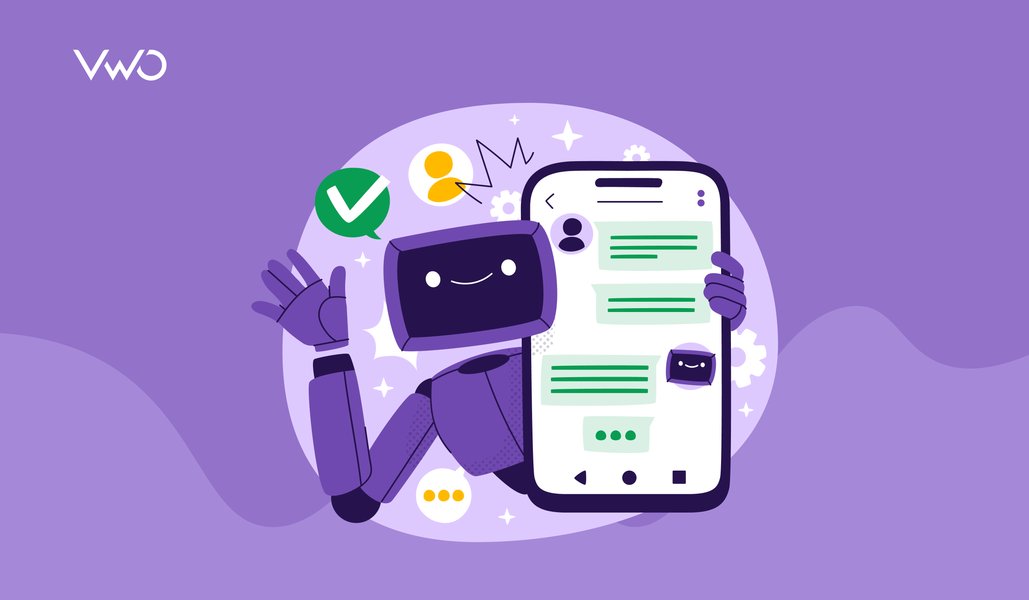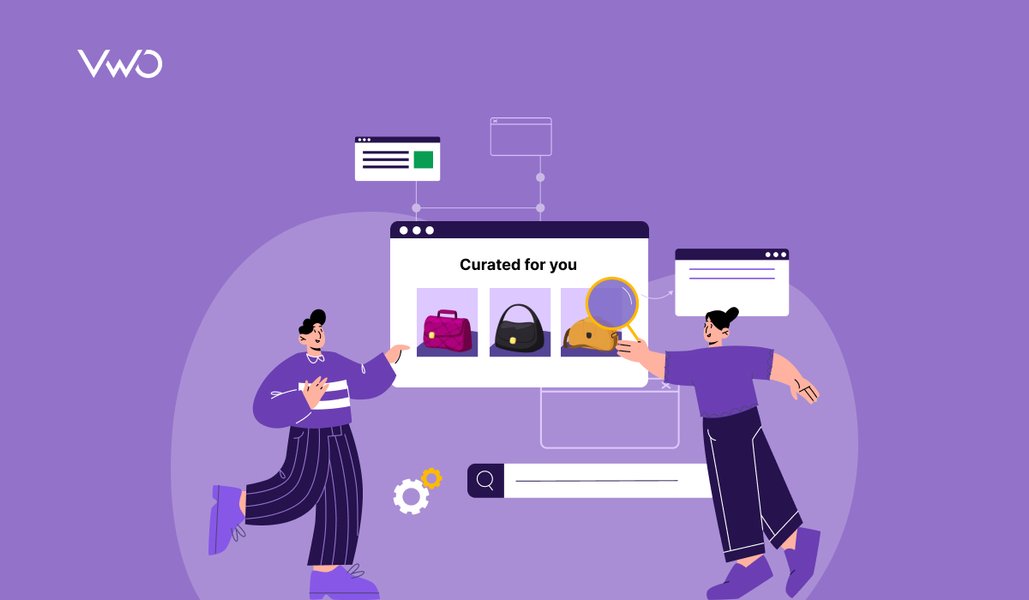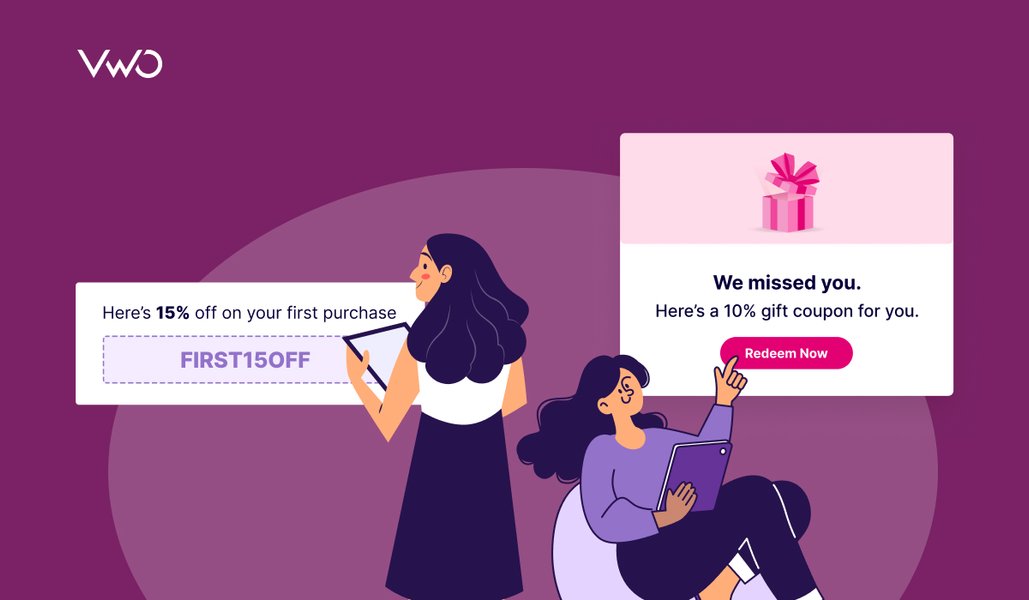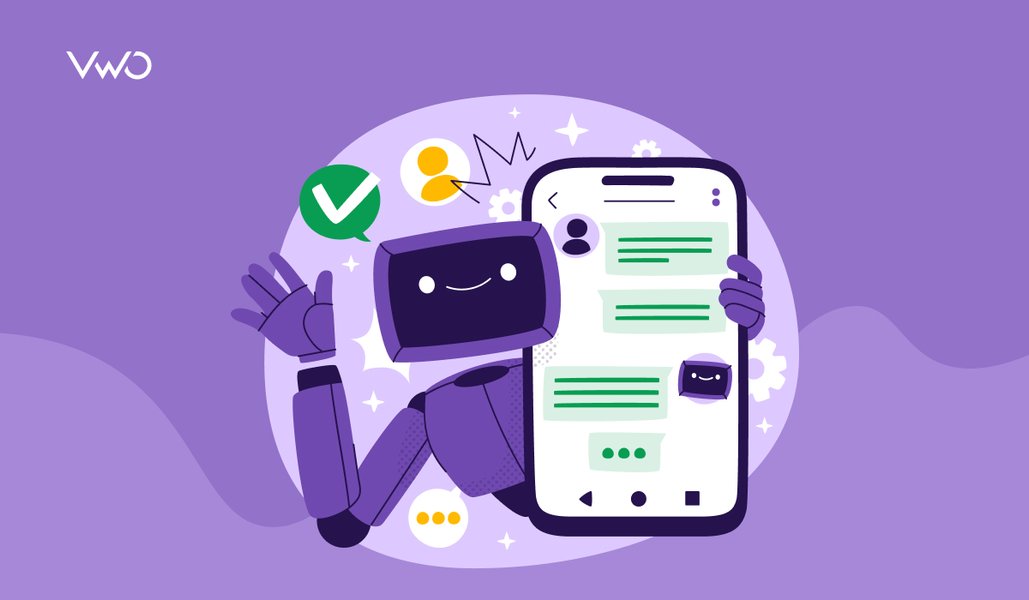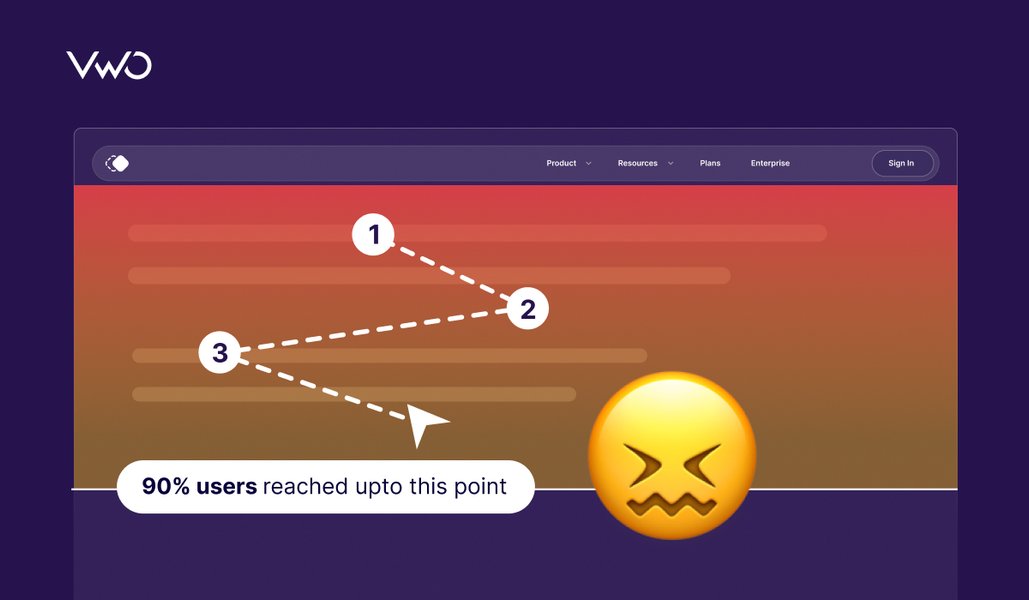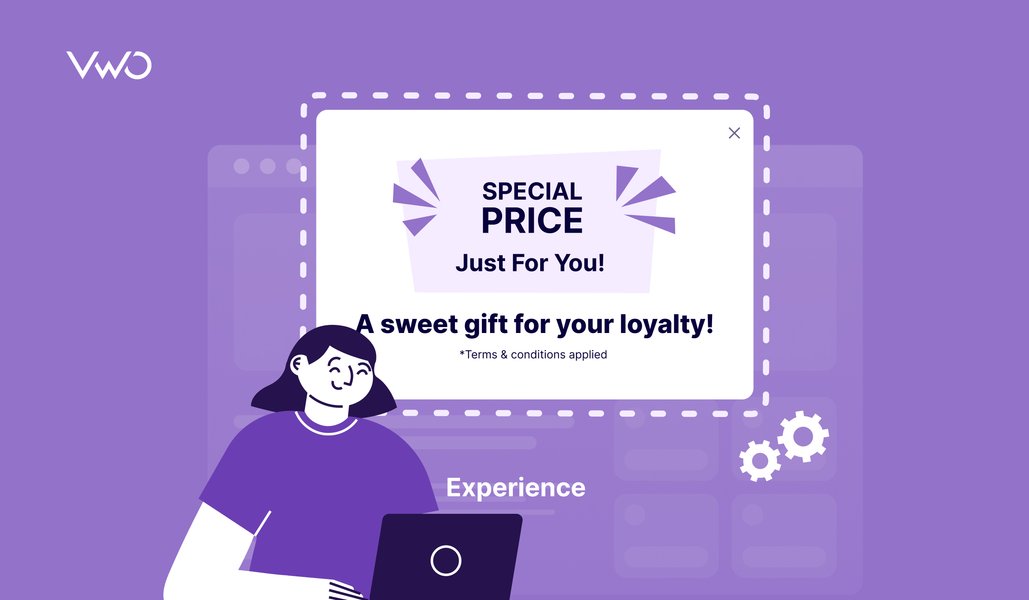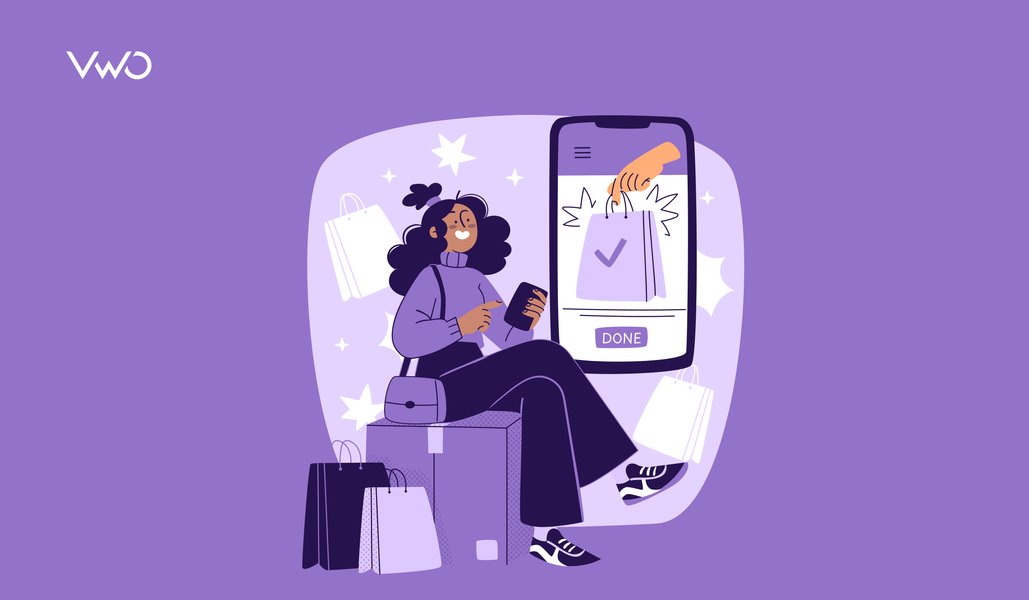Website personalization is like choosing a gift for someone.
Think about it.
Ideally, when we are in the process of choosing a gift for someone, we consider various factors like the person’s age, what they like, things they love to do, their hobbies, and so on.
Even if it’s a last-minute purchase, we try to ensure that our gift is something that the other person will find useful and hope that it will also benefit them for a long time.
Similarly, when a consumer lands on your website, it’s almost like they have opened a gift box.
Inside this box, they are hoping to find something useful, valuable, and more importantly, something that can solve a specific problem of theirs. Moreover, every potential visitor who lands on your website is expecting you to deliver a gift that matches their requirements.
So, how do you ensure that your website offers the perfect gift to your consumers?
The answer is… via personalization, implemented the right way.
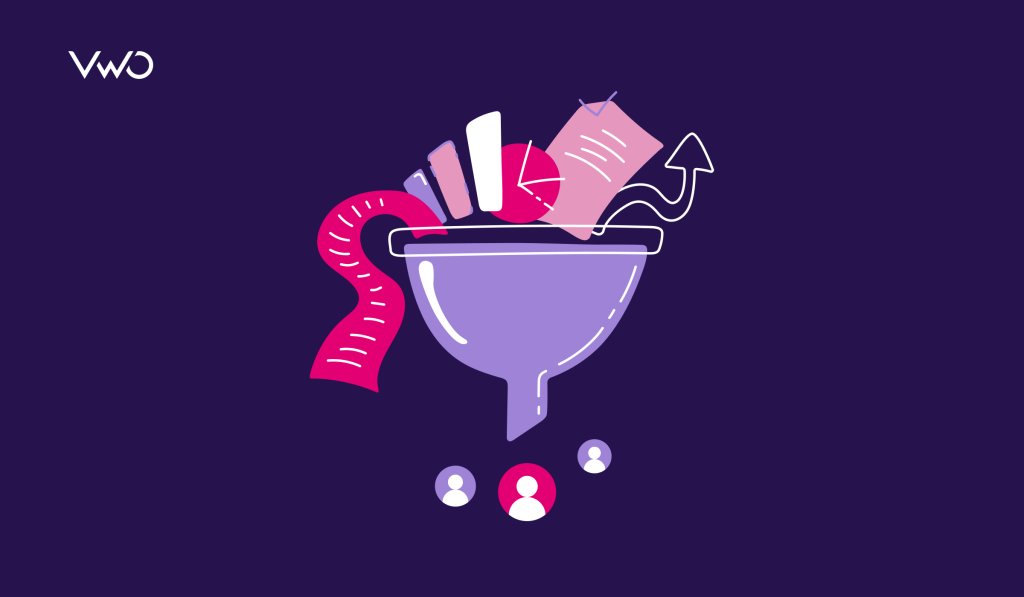
CRO and Personalization
When we talk about Conversion Rate Optimization (CRO), we look at it as a way of increasing the number of visitors that perform the desired action.
At first glance, this might seem like a fairly simple task, however, as we dive deeper into the world of conversion optimization, we realize that it is a tricky one but also has the potential to offer a whole lot of benefits in the long run. So, not only should you keep up your CRO efforts, but you should also focus on amplifying the same.
And personalization is something that helps you to upgrade your CRO strategies and boost your CRO performance.
‘Presuasion’ and its impact on the conversion mindset
The best way to implement personalization is to use what you know about your customers and ‘presuade’ them to arrive at a ‘conversion mindset’.
The idea here is to take your customers on a journey through your conversion funnel without them even realizing it.
For example, IMB Bank noticed that a large number of visitors were dropping off the first page of their personal loan application form. With the help of VWO Insights, they realized that the instructions mentioned on the form were unclear and people were finding it difficult to navigate through the steps.
In order to rectify this issue, IMB Bank introduced various elements to optimize the application page such as
- Time taken to complete the steps
- Awards won by the bank
- Improved design
- Clear instructions for each step
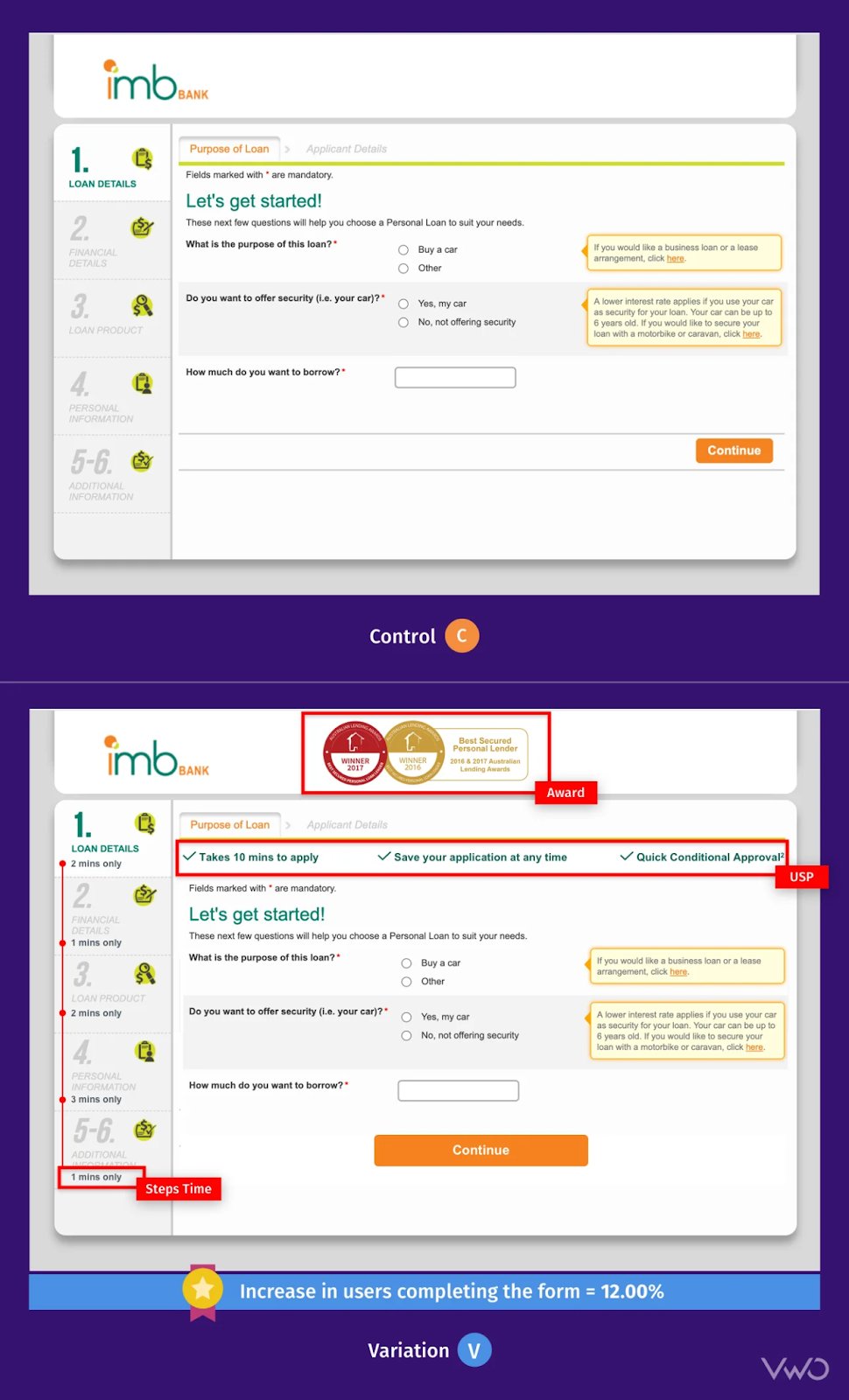
They tested these changes and a few other modifications on the loan application page and were able to increase their conversion rate by 36%. Here, IMB Bank ‘presuaded’ or helped users to be in a mindset where they were willing to take the required actions.
Grab your free trial of VWO and discover hidden opportunities for customer engagement today.
Having this type of ‘conversion mindset’ is what tilts users in favor of your ‘gift’ and prompts them to take the action you want them to take.
With that being said, let’s have a look at the three common challenges that you must address in order to successfully ‘presuade’ your visitors to arrive at a conversion mindset.

1. Understanding your first-time visitors
The problem: Having the same landing page for first-time visitors arriving from different campaigns.
Let’s say you are running multiple ad campaigns on Google Search. Whenever someone clicks on any of these campaigns, you take them to a specific landing page in the hope of converting them.
The problem here is that there is no continuity between the messaging of the ad campaigns and the content they see on the landing page. You see, all these campaigns have varying headlines that have been designed to target different audience personas.
However, the traffic from all of these campaigns is sent to the same landing page.

So, when someone finds a particular campaign interesting, they are most probably going to see a page where the communication is somewhat different from the ad that they just clicked on.
Moreover, this issue is also carried forward to the various elements being displayed on the page such as the call-to-action button or the user reviews section.
This is quite worrying as your visitors will experience a disconnect during their first interaction and might just drop off due to it.
The solution: Optimize the post-click experience for your visitors.
How? By using data to your advantage.
And, this is where personalization can come to your aid. You need to build your website in a way where you can modify a landing page to display content based on the research that you’ve done and the ad groups that you currently have.
In simpler terms, you need to have multiple versions of the main landing page.

By doing so, you will ensure that each group of visitors is shown a unique, personalized landing page, based on the campaign that brought them there.
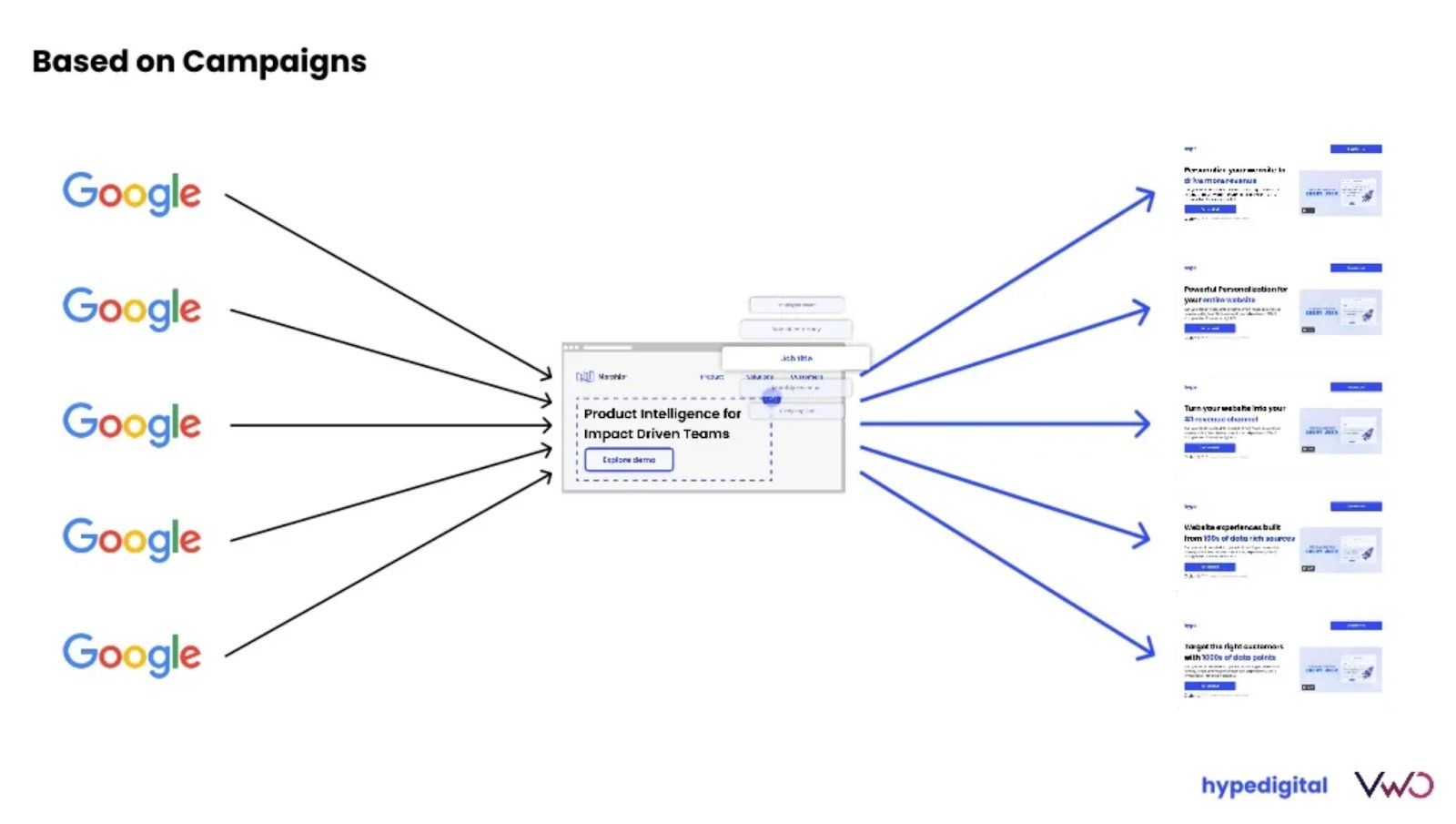
One of the ways through which you can easily implement this idea of personalization is by using UTMs. These are special codes that are added at the end of any URL to track the performance of a particular campaign or activity.
By using UTMs, you can identify the platform through which a particular visitor is coming from. Based on this information, a variation of your original landing page, with a different headline & more personalized content, can be shown to the visitor.
This means that all of the traffic that is coming from various platforms is sent to a single page, however, based on the UTMs being used, they all are shown different versions of your landing page.
For example, in the image below, the text on the landing page is modified according to the search term entered by the user. This method is known as dynamic text insertion and is used by brands to build relevancy and trust with potential visitors.
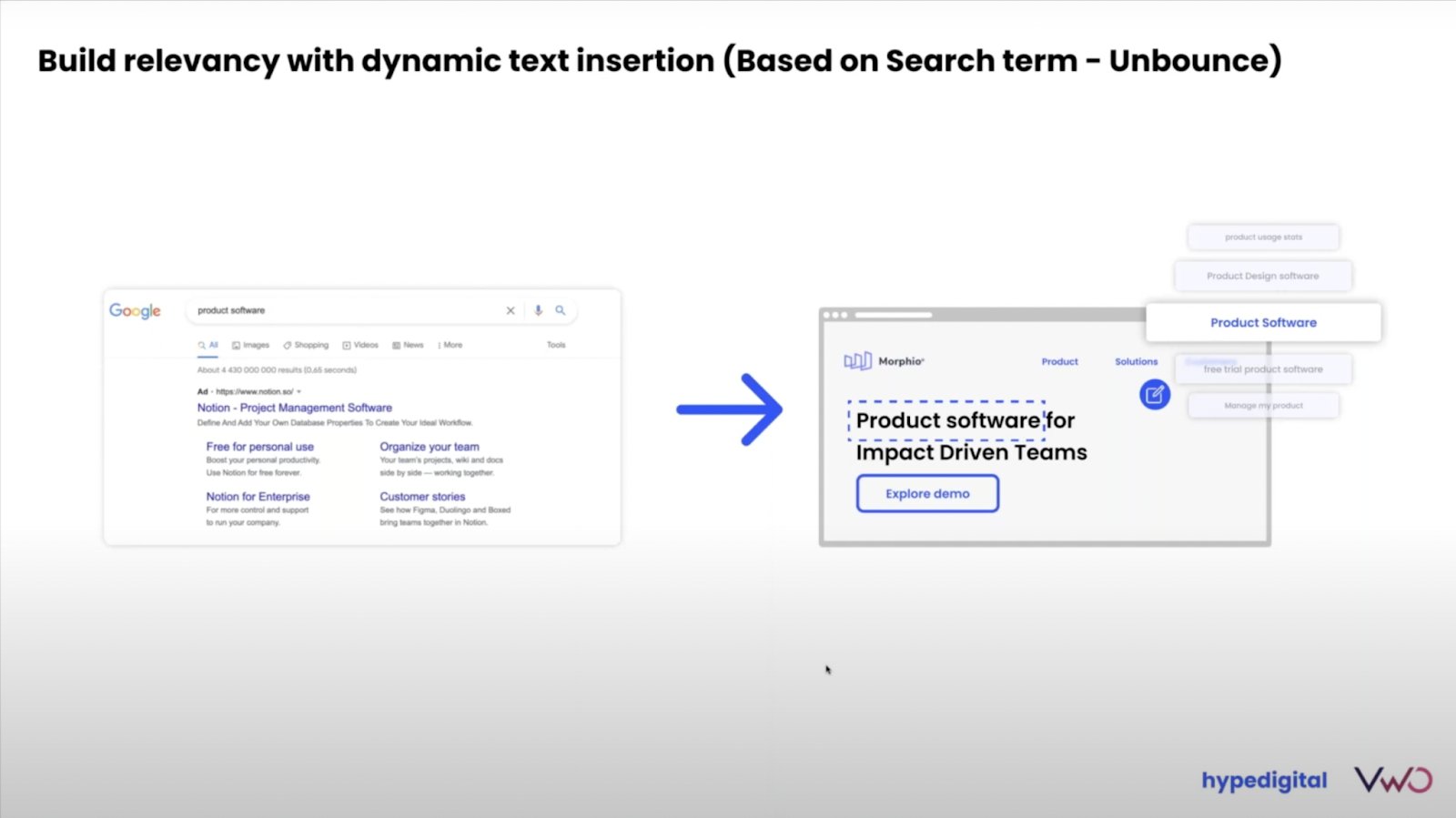
Once you are able to implement these ideas successfully, you can easily target various audience personas by just making minor changes to the headline or other elements on the landing page.
So, when someone lands on your website for the very first time, they will enjoy a seamless, high-quality, personalized experience, without even sharing any kind of information beforehand.
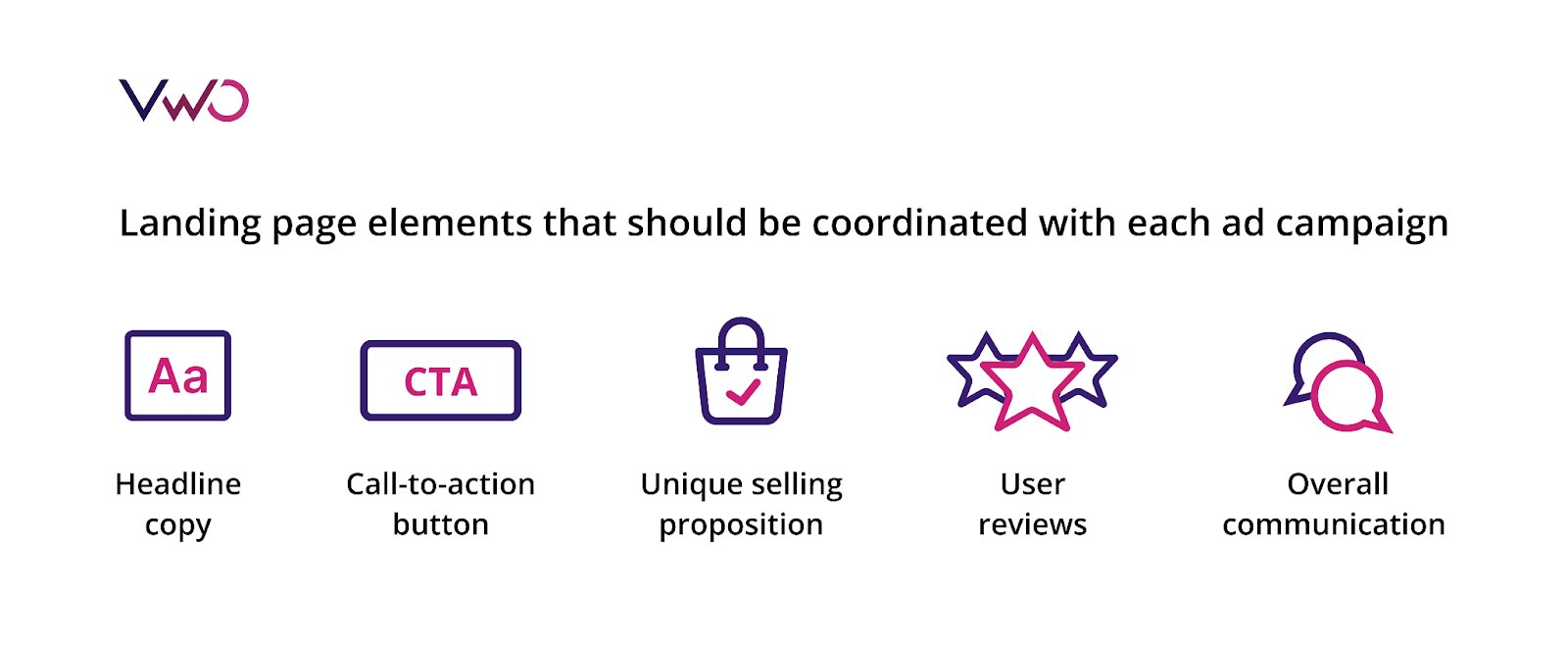
2. Personalize for the returning visitor
The problem: Important data about the returning visitor is lying scattered.
When people visit your sites, they leave behind important data points such as the device they were on, the browser they were using, whether they were first-time or returning visitors, and so on.
These data points are like notes or messages that customers have left for you to study and understand. However, most brands fail to understand the importance of these messages and almost 73% of this customer data goes unused for analytics.
Therefore, leveraging this data to your advantage is a must if you wish to take your personalization campaign to the next level and achieve business growth.
The solution: Optimize the on-page experience for returning visitors.
How? Build ICPs and opt for location-based targeting.
Building various ICPs (Ideal Customer Profiles) or customer segments is a great way to personalize your website for all visitors. This is done by gathering information from various data points and then creating a customer segment or profile based on it.
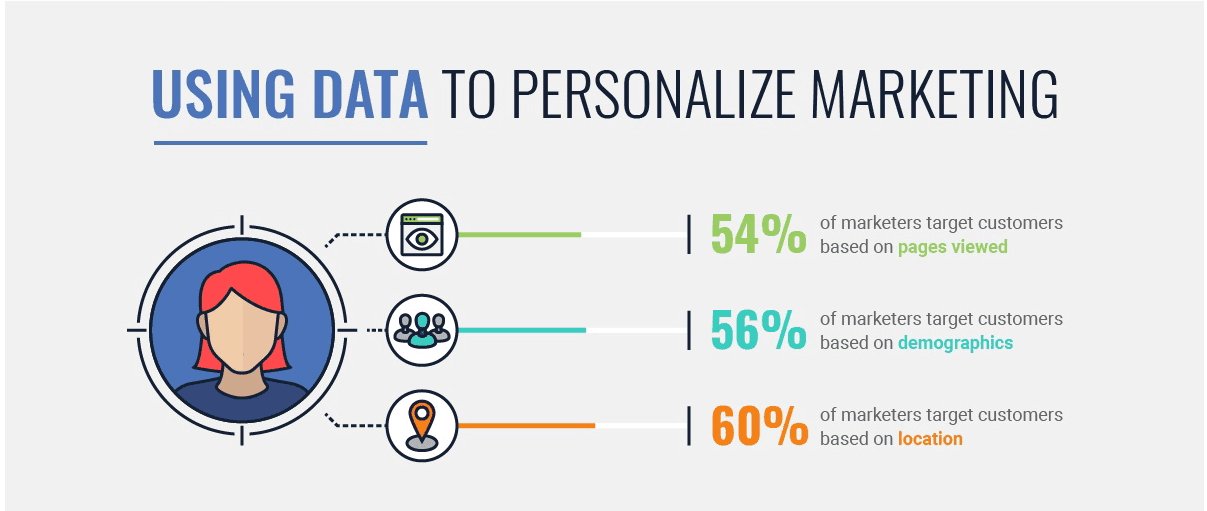
With tools like VWO Personalize, you can gather all of this data to create specific customer segments and offer personalized experiences for each of them.
As people explore your website, you can use this tool to trigger certain offers, messages, or pop-ups based on their profile. Also, you can track how people engage with these personalized elements and then improve their performance accordingly.
Take a free trial of VWO today and create personalized experiences for each visitor.
This will help you to build unique customer-focused journeys while also allowing you to target important audience segments at the right time. Gradually, you will be able to create a large number of personalized experiences for all types of visitors which, in turn, will help you to boost your conversion rate as well.
Location-based targeting is another way to amp up your personalization campaigns.
Instead of having a generic landing page, you can tweak the communication to personalize it for specific users according to their location. This simple method will help you to connect with your potential customers on a very personal level.
For example, when Hype Digital implemented location-based targeting for one of their clients, they were able to substantially increase the conversion rate for one of their landing pages.
The change was simple – instead of a generic headline that said “Reach of millions of buyers”, they replaced it with “Reach millions of Australian buyers” – and the conversion rate grew from 4.5 % to an impressive 7.2%.
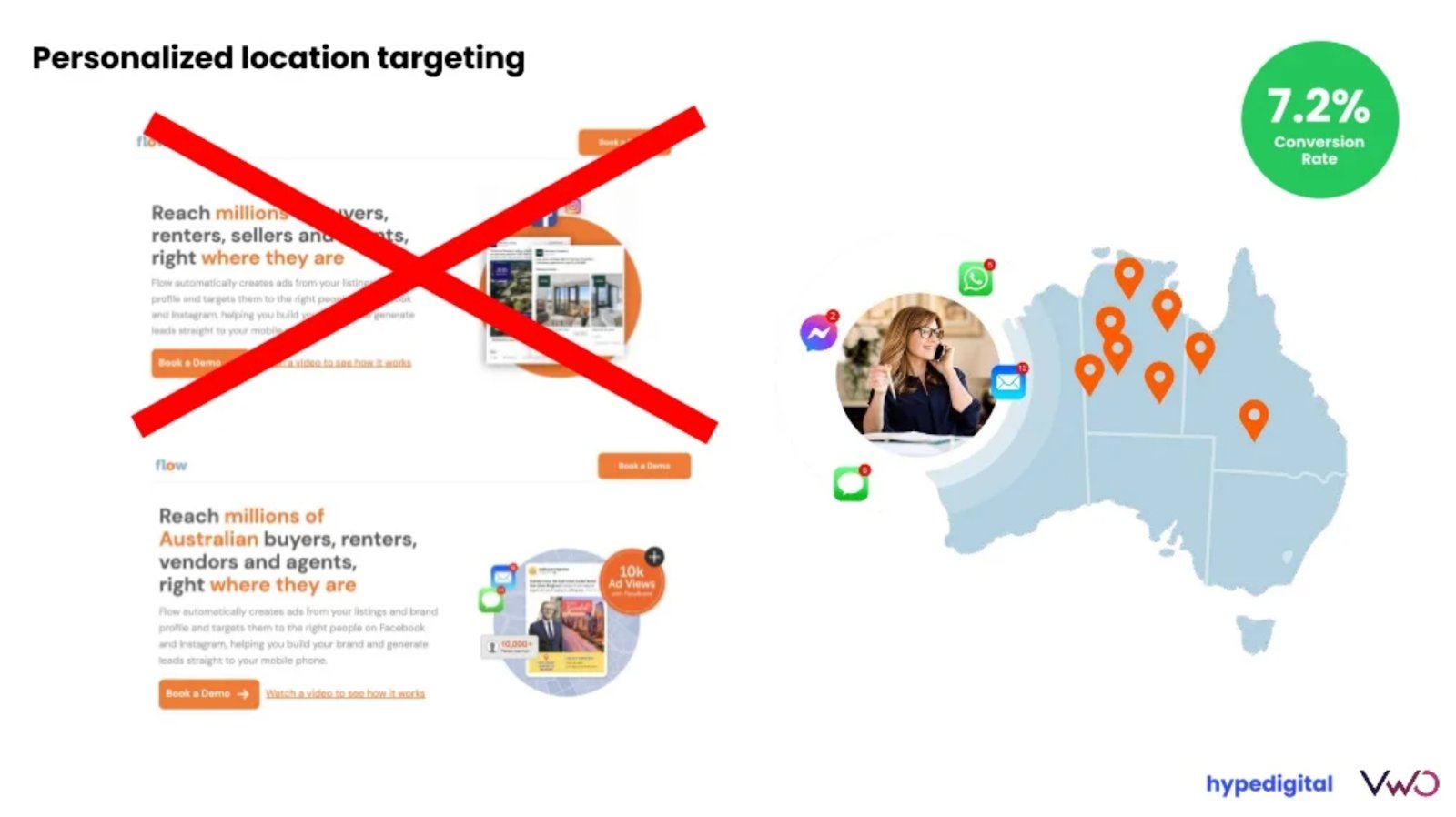
Image source: Hype Digital
This also brings into focus the importance of having a good conversion optimization strategy that acts as a solid base for these personalization campaigns that you are running.
So, even when there are small, incremental changes like the one mentioned above, you will see some amazing results just due to the number of visitors that you are converting.
3. Cross-sell or upsell to existing customers
The problem: Unable to build customer loyalty after conversion.
By the time a visitor decides to become a customer, you have already created a tailor-made, personalized experience for this person based on their behavior, ad group, ICP, etc.
However, your personalization campaign should not end here. Instead, you must ensure that the customer stays with your brand for as long as possible and, more importantly, has an amazing experience during this period.
The solution: Optimize the post-conversion experience by upselling or cross-selling to loyal customers.
How? Use the available data to recommend relevant products and services.

It is easier to upsell or cross-sell to loyal customers as they have already gone through the journey and are aware of the type of quality and experience that you have to offer.
So, by using the data that is available in your system, you can easily target these customers again and slowly turn your existing pipeline into your secret upsell weapon.
For example, with the help of a site search tool, you can get a clear idea of the exact terms that people are searching for on your website. By using this data, you can then promote or recommend relevant products for different customer segments.
Also, you can use tools like VWO Data 360 to monitor how various customer profiles are engaging with your site along with the type of actions they are performing.
Start your free trial of VWO now and get a 360-degree view of your customers on a single platform.
Once you study this data and gain a better understanding of all your customer profiles, you will discover some new, exciting ways of targeting your customers and building brand loyalty.
Take a deep dive into personalization
Miles Hoogwerf, Head of CRO at Hype Digital, recently hosted a VWO webinar where he spoke about the future of personalization and explained how brands can drive business performance by using the right tools for CRO.
We’ve curated actionable insights from the webinar and combined them with VWO’s unique perspective to write this blog. You can watch the webinar to gain a more in-depth understanding of personalization.
Conclusion
When you successfully implement all of these personalization strategies, you will notice the leads that were earlier coming in through your campaigns have now automatically turned into higher-qualified leads.
This is because you have personalized their experiences to a greater extent and have also smartly ‘presuaded’ them to arrive at this conversion mindset.
Gradually, with the right tools & strategies, you will be able to increase their lifetime value and arrive at a position where these customers will then speak fondly of your business for a long time.
So, kickstart your personalization journey today and get ready to explore the unlimited opportunities for growth that come along the way.



